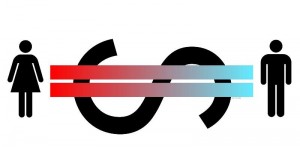 Equal pay for equal work … it’s a concept that has long been disputed in American employment law. Did you know that it wasn’t started by women advocating for equal pay, but by unions fighting for equal wages for men? When soldiers went off to fight World War II and women worked their jobs to keep the U.S. economy functioning, the National War Labor Board urged employers to pay women the same wages as their male counterparts. Because, however, most companies did not heed this advice, men returning from war worried that their jobs would be permanently taken by the cheaper women’s labor force. In response, unions stepped in to try to stop employers from undercutting men’s wages. The concept of equal pay grew out of these circumstances, and has since been equated to lower wages paid to women. What ensued after a decades-long fight was the Equal Pay Act of 1963, signed into the nation’s employment laws by President John F. Kennedy.
Equal pay for equal work … it’s a concept that has long been disputed in American employment law. Did you know that it wasn’t started by women advocating for equal pay, but by unions fighting for equal wages for men? When soldiers went off to fight World War II and women worked their jobs to keep the U.S. economy functioning, the National War Labor Board urged employers to pay women the same wages as their male counterparts. Because, however, most companies did not heed this advice, men returning from war worried that their jobs would be permanently taken by the cheaper women’s labor force. In response, unions stepped in to try to stop employers from undercutting men’s wages. The concept of equal pay grew out of these circumstances, and has since been equated to lower wages paid to women. What ensued after a decades-long fight was the Equal Pay Act of 1963, signed into the nation’s employment laws by President John F. Kennedy.
 The Age Discrimination in Employment Act or ADEA is a federal law that prohibits workplace discrimination based on an individual’s age. There are also state specific laws which make it illegal to discriminate against workers based on age. Employees who are 40 years old or older are protected from age discrimination under the ADEA. In 1990 the Older Workers Benefit Protection Act (OWBPA) was added as an amendment to protect older employees from being denied benefits by employers.
The Age Discrimination in Employment Act or ADEA is a federal law that prohibits workplace discrimination based on an individual’s age. There are also state specific laws which make it illegal to discriminate against workers based on age. Employees who are 40 years old or older are protected from age discrimination under the ADEA. In 1990 the Older Workers Benefit Protection Act (OWBPA) was added as an amendment to protect older employees from being denied benefits by employers.

The Americans with Disabilities Act or the ADA prohibits discrimination against individuals based on their disabilities. This is similar to other employment laws which protect the civil rights of individuals on the basis of race, religion, gender, or national origin. The ADA is meant to provide equal opportunities for individuals who have disabilities in the workplace, transportation, public accommodations, telecommunications and state and government services.
 The False Claims Act is also called the “Lincoln Law” and is a federal law of America that imposes liability to federal contractors who defraud programs set up by the government. There is a provision that allows for those who are not affiliated with the government to also file actions for the government. Those that file can receive about fifteen to twenty?five percent of any of the recovered damages. Claims have typically been in health care, military, and other government spending programs. The government recovered almost $22 billion between 1987 and 2008 through the False Claims Act.
The False Claims Act is also called the “Lincoln Law” and is a federal law of America that imposes liability to federal contractors who defraud programs set up by the government. There is a provision that allows for those who are not affiliated with the government to also file actions for the government. Those that file can receive about fifteen to twenty?five percent of any of the recovered damages. Claims have typically been in health care, military, and other government spending programs. The government recovered almost $22 billion between 1987 and 2008 through the False Claims Act.
 Media finds whistleblowers as a popular subject and has for a long time. The Enron scandal is remembered by most Americans. Many debate whether the intelligence workers like Edward Snowden or Bradley Manning might qualify as “whistleblowers”. Most are aware of the Whistleblower Protection Act of 1989 as well that gets formed into the backbone of the whistleblower protection in theUnited States. The history of the concept of a whistleblower dates further back and includes an interesting history that gives the modern law there context.
Media finds whistleblowers as a popular subject and has for a long time. The Enron scandal is remembered by most Americans. Many debate whether the intelligence workers like Edward Snowden or Bradley Manning might qualify as “whistleblowers”. Most are aware of the Whistleblower Protection Act of 1989 as well that gets formed into the backbone of the whistleblower protection in theUnited States. The history of the concept of a whistleblower dates further back and includes an interesting history that gives the modern law there context.
 The Whistleblower Protection Act, or WPA, gives protection from retaliation or persecution to government employees that disclose to the police illegal and improper conduct that goes on in the workplace. The law is to protect any federal employees who uncover some wrongdoing and report it to authorities. Under the WPA, the government agency accused is not allowed to end the employment or “bully” a worker of government contractors, science based agencies like NASA, or national security personnel.
The Whistleblower Protection Act, or WPA, gives protection from retaliation or persecution to government employees that disclose to the police illegal and improper conduct that goes on in the workplace. The law is to protect any federal employees who uncover some wrongdoing and report it to authorities. Under the WPA, the government agency accused is not allowed to end the employment or “bully” a worker of government contractors, science based agencies like NASA, or national security personnel.

